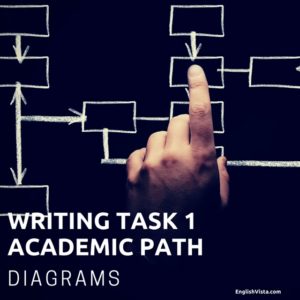General Information
- Respond to a bar chart, pie chart, line graph, table, map or flowchart
- Write at least 150 words
- Select and report on the main features
- For charts/graphs/tables, describe the data and compare it, reporting any significant results or trends that you notice
- For flowcharts, describe the process of how the thing works/is done
- Spend no more than 20 minutes on this task
Structure of the Essay
Paragraph 1: Opening (approximately 40-60 words)
Describe what the graph/chart/flowchart is showing or describing without copying the wording in the question.
Paragraph 2: Main Body (approximately 100-130 words)
Highlight the key information. Support points with examples or numbers from the data. There is no need to speculate or provide your own opinion on the data.
Paragraph 3: Conclusion (approximately 30-50 words)
Summarise the most important points from the data.
Sample Question: Diagram
The diagram below shows how ocean thermal energy conversion (OTEC) works.
Summarise the information by deciding on and exploring its main features, and make any relevant comparison.

How Ocean Thermal Energy Conversion (OTEC) works
Adapted from: The Daily Telegraph, 8th January 2008
Model Answer: Diagram
The diagram demonstrates the transformation of seawater into drinking water. The main components of the process are an evaporation chamber, a turbine, and a condensing chamber. The seawater of temperatures varying from 5 to 29 degrees celsius is also required.
In this process, the seawater is heated up by solar energy that is transmitted from the sun. Once the seawater enters the chamber, warm temperatures cause the salt and the water to separate. The water evaporates as steam that drives the turbine, while the salt is deposited into another tunnel below. The steam vapour then enters the condensing chamber.
Meanwhile, the deposited salt mixes with cold seawater, which cycles around the condensing chamber to cool it down. Through this process of cooling, the steam returns to its liquid form of water. The waste salt is dispensed back into the ocean to allow the process to repeat. The water that leaves the condensing chamber is now drinkable.
Overall, this system relies on the processes of heating and cooling to separate salt from the water and move the salt-free liquid through the chambers.
Key Words and Phrases
- The diagram demonstrates…
- The main components are…
- In this process, …
- Once …
- In order to…
- Through this process, …
- As a result of this, …
- Due to …
- One key feature…
- In contrast, …
- Overall, it appears that…
Practice Test: Diagrams
This diagram shows how solar power is made.

Summarise the information by deciding on and exploring its main features, and make any relevant comparison.
Practice Test: Sample Answer
This diagram demonstrates how solar energy from the sun is transformed into electricity to power a home. The main components of the process are light rays, a solar panel, an inverter, a meter, an electric pole, and wires.
In this process, light rays generated by the sun are absorbed by a solar panel. The panel is located on the roof of the house. Once the solar energy has been caught, it travels through a wire (shown in red in the diagram) to the inverter.
After this, the energy travels through a green wire into the meter box. From here, the electricity is sent into and returned by the electric pole.
The final step is for the electricity to be transferred to the outlet inside the building. From here, the electricity powers electrical objects in the house, such as the refrigerator and lamp shown in the diagram.
Overall, it appears that solar rays are the most important part of the whole process as they are transformed into the electricity that is used to power objects in solar-powered homes.

